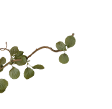Spending more time outside means that you need to start better caring for your skin to protect it from wind, sun, and other elements. We have devised a new formula for a lip balm that does just this! Lip balms are just a simple blend of waxes, butters, and oils that help to nourish, protect, and heal the delicate skin on the lips. This formula that we created is super high in protective Cocoa Butter, and has the addition of healing Calendula oil and ultra rich Avocado oil. The Vitamin E will not only extend the shelf life but will add valuable skin care benefits. Here's the formula to make 150 grams:
23% Beeswax 34 grams
20% Cocoa Butter 30 grams
8.5% Shea Butter 13 grams
25% Avocado Oil 37 grams
23% Calendula Oil 35 grams
.5% Vitamin E MTS 50 1 gram
Directions:
1. Weigh out all the ingredients except for the Vitamin E in a heat-safe container.
2. Melt it in the microwave or in the double boiler until only a few of the beeswax pastilles remain, then stir until they melt.
3. Wait for the balm to cool down until your hand can comfortably rest on the bottom of the measuring cup, then add the vitamin e.
4. Add essential oil or flavour if desired (we added about 40 drops of peppermint essential oil). At this point you can add mica or other pigments of your choice if you want the balm to have colour. TIP: Try adding about half a tablespoon of Oil Soluble Micronized Zinc Oxide to your balm to give it some added sun protection value.
5. Pour into the lip balm containers of your choice.
We used the 1.2" white round label from Online Labels for that adorable "finished product" look that's great for giving away to family and friends. The labels are inexpensive and the templates are super easy to customize using the Maestro Label Design software, otherwise Avery has a huge selection of labels and customizable templates. Just make sure you use the right label for your type of printer - inkjet or laser.
It's that simple! A few ingredients, some packaging, and a label and you have silky smooth lips ready for puckering!
Joyous Springtide from all of us at Voyageur



















































